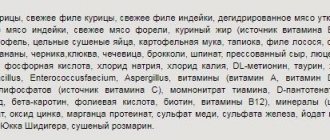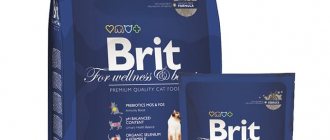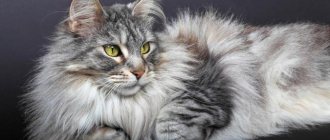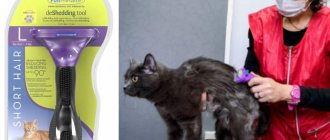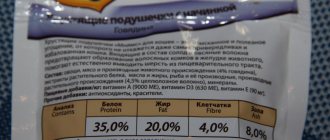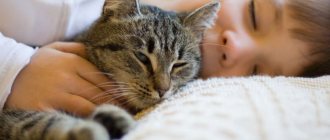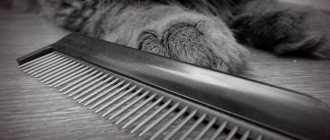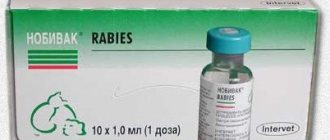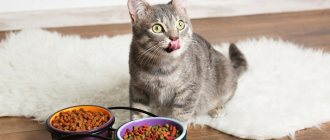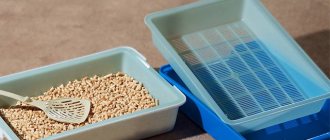Is it possible to measure dry food without a scale?
There is no way to accurately measure dry food without a scale. All the options offered on the Internet either involve the need to make scales yourself, which is easy in words only, or the use of complex methods that exploit Archimedes’ laws (immersing weights in liquids). The latter, of course, has not been canceled, but in everyday practice you will get tired of conducting experiments.
Therefore, if you feed your pet dry food, we advise you to purchase electronic or even mechanical kitchen scales, whose cost is very low. But until you do this, it is best to go to a pet store and ask for a measuring cup for Acana and Orijen food, which have marks on them that allow you to measure the amount of your chosen diet. We remind you that it does not make sense to use measuring cups from other foods: the pellets of different diets vary greatly in size and density, and you will not get an exact figure.
In case your store doesn’t have a branded measuring cup, take with you a plastic bag of dry food and another empty one, and ask them to measure out the daily amount for you. You can weigh yourself in any other store, since each of them has check scales freely available to customers.
By pouring the weighed amount into any container and putting a mark on it, you can use it as a measuring cup. It is very convenient to cut the plastic cup according to the mark - this will allow you to quickly measure the required portion.
How to weigh dry cat food without scales
#advice-from-the-vet-point
Often, when I draw the attention of owners to the fact that their cat is obese, I receive the answer in response: “she doesn’t eat much!” At the same time, in most cases, owners find it difficult to answer exactly how much a cat eats, and how this corresponds to the norm recommended by the manufacturer. And in most cases, the owner does not know how to measure what a cat eats when dry food is constantly available.
Controlling the amount of dry food eaten by a cat, if all family members feed it “at the cat’s request,” is a serious, almost impossible task for many cat owners.
Why control the food your cat eats?
So, if your cat has gained excess weight over the winter, or during an examination your veterinarian noted that your cat is obese, then it’s time to start monitoring the amount of dry food that your cat eats per day. Further, if necessary, this volume can be reduced or increased.
It often happens that a cat eats little by little all day, and all family members feed it, then the dose of dry food recommended by the manufacturer can be significantly exceeded.
How to avoid this?
First, you need to decide on the standard recommended by the manufacturer.
Determining the starting feeding rate
Look on the food bag for the amount recommended by the manufacturer for your cat. At the same time, look at the weight of the animal not what it is now, but the ideal one for your pet. For example, in the best shape your cat weighs 3.5 kg, and now it’s almost 5, which means we’re looking at 3.5 kg as the norm.
Next, take and measure the daily amount of feed strictly according to the recommended weight or volume.
If the cat eats only dry food, then this will be the starting feeding rate.
But it often happens that a cat receives a mixed diet, that is, dry food is combined with a certain dose of industrial canned food in bags or jars throughout the day.
In this case, the dose of dry food is reduced depending on the percentage of dry food in your pet’s diet.
When combining dry and canned food, the dose of each is calculated as a percentage of the recommended dose of each type of food.
The recommended dose of canned food is usually written on the label and is indicated not in grams, but in pieces or jars.
For example, if a cat receives a bag of soft food and dry food per day, then the norm is calculated as follows. If the manufacturer of soft food recommends a dose of 3 sachets per day when feeding only them, then 1 sachet is approximately 1/3 (or 30%) of the daily feed volume, and if the manufacturer recommends 2 sachets per day, then 1 sachet is already ½ (or 50%) of the recommended daily dose. In the first case, the need for dry food is calculated as 2/3 (or 60-70%) of the recommended amount, and in the second - only ½ (or 50%) of the volume or weight of food recommended by the manufacturer.
What if the whole is divided into parts?
As a last resort, you can measure the required amount of dry food in small packages by making simple mathematical calculations and dividing the weight of the package by the recommended daily allowance. Thus, you will receive a figure reflecting how many daily doses are included in the package you purchased, and you will only have to scatter its contents into the appropriate number of identical containers in approximately equal quantities.
Of course, this method will not provide “pharmaceutical” accuracy, and you will have to spend a fair amount of time, but in an emergency it will help you determine the amount of dry food for your dog or cat.
Calculation of dog food for 1 serving
Knowing the daily volume of food, it is not difficult to calculate the amount of granulated food served in one feeding.
How to determine the mass of a serving
How to calculate the amount of food for a dog: you need to divide the daily amount by the number of feedings; for adult animals this is two. The amount of food per 1 kg of body weight per day for an adult dog depends on the breed, weight and calorie content of the food (see above).
Active animals, service dogs or athletes need special consideration, as well as pregnant and lactating women. To the usual dosage of dry dog food, approximately 1/3 of the serving is added for working dogs and 1/4 for pregnant and lactating dogs. If the dog is elderly and inactive, the portion should be reduced by about 1/3.
How to measure the required weight
It’s definitely not possible to measure dry food without a scale. Therefore, if you want to know the perfectly accurate amount of feed, you will have to purchase a kitchen scale.
Manufacturers of some expensive foods include special measuring cups in the pack, with which you can pour the desired portion. However, it is worth remembering that such a container is designed only for this brand, because all dry products have granules of different densities, sizes and weights.
If you count only approximately, the food can be poured into a 100 ml cup - it will be about 240-250 grams. When buying food in bulk, you can ask the seller to divide the product into several parts equal to the daily feeding rate. And at home you can simply divide them in half: for breakfast and dinner.
Feeding standards are not an empty phrase
Well, the worst thing you can do is pour dry food into the eye, and even worse if you do this regularly. Compliance with feeding standards is a prerequisite for proper nutrition of dogs and cats, and given that our brain is accustomed to evaluating much larger volumes of food than dry food, it will definitely err on the side of increase.
By constantly overeating, your pet will sooner or later become obese and be at risk for many diseases. Feeding rates are indicated on each package of Acana or Orijen food, and you can also view them on our website.
How much dry food is in a tablespoon? Types of feed
In order for pets to always be healthy, it is necessary not only to comply with all living conditions, but also to feed them correctly. How many grams of food are in a tablespoon and is it possible to give a dog or cat only such food, limiting it in regular food?
How much dry food is in a tablespoon and how to properly give food to your pet? Beginner breeders ask this question quite often.
How many grams of food should I give to a puppy and an adult dog? Are there clear recommendations that take into account the breed of the pet? Experts assure that there are no uniform standards in this case. If a breeder wants his pet to remain strong and healthy, he needs to occasionally consult with a veterinarian regarding the menu for the pet and the amount of food that will be ideal in this case.
Currently, veterinary clinic staff increasingly advise feeding cats and dogs dry food. There is no need to worry about your pet being deficient in certain nutrients. All components in premium dry food are selected so that the diet is close to ideal. It is very convenient to feed dogs and cats this way. It is enough to buy food and dose it, without thinking about the freshness of the product or the need to diversify the menu.
In order for your dog or cat to remain healthy and full of energy, you need to calculate the volume of portions correctly. All major manufacturers of quality feed provide their products with detailed instructions for use and dosage. Measuring spoons and cups are placed in bags of food for cats and dogs. This makes the task much easier for breeders. There is no need to measure the amount of feed with tablespoons or other devices. If there is no cup, it is better to find a scale and weigh a certain amount of the product, and then compare it with the data in the tables. For example, if a small dog requires 20 grams of food per meal, you can calculate how many tablespoons this amount corresponds to, how much food is in 1 tablespoon.
Experts do not advise practicing combined nutrition if dry food belongs to the premium class. This food contains everything an animal needs, and ordinary food in this case can only do harm and cause digestive problems.
How many grams of food does a cat need to stay healthy? It is also impossible to answer this question unambiguously. For small kittens weighing 1-2 kilograms, doctors recommend about 30 grams of food per day. A tablespoon contains approximately 15 grams of dry food product. This means that a kitten up to 2-3 months of age needs approximately 2 tablespoons of food per day. This amount must first be divided into several meals and soaked so that the animal can easily eat it.
An adult cat weighing up to 6 kilograms needs 100-150 grams of food per day. It is better to measure this volume not with spoons, but with glasses. Experts also take into account the age of the animal, and not just its weight. For example, a large kitten requires much more food than an adult in the same weight category. This is due to the fact that the growing body needs to spend energy on development.
For small dogs, experts recommend about 60 grams of food per day. If the dog is of impressive size and is in the prime of life, up to 400-500 grams of dry food product may be required per day. This is quite costly from a material point of view. Fish and small birds need very little food. 0.5-1 tablespoon per day is enough.
Also, do not forget that when using different feeds, recommendations regarding the amount will be different. All products have their own energy value. For example, premium food has a very good composition and contains virtually no ballast substances that do not provide any benefit. Accordingly, much less of this feed is needed compared to lower quality products that have low nutritional and energy value.
Animals need to be fed at least 3-4 times a day, but more detailed recommendations can only be given by a specialist who takes into account the pet’s lifestyle, age and activity.
If your pet is not gaining weight well or, conversely, seems overly plump, you should contact your veterinarian so that a specialist can adjust the diet and give recommendations on the number of servings your pet should consume.
The question of how many grams of food are in a spoon can only be answered approximately. As a rule, manufacturers of food for pets, birds or fish indicate on food packaging how to dose the product correctly and how many times a day to give it.
